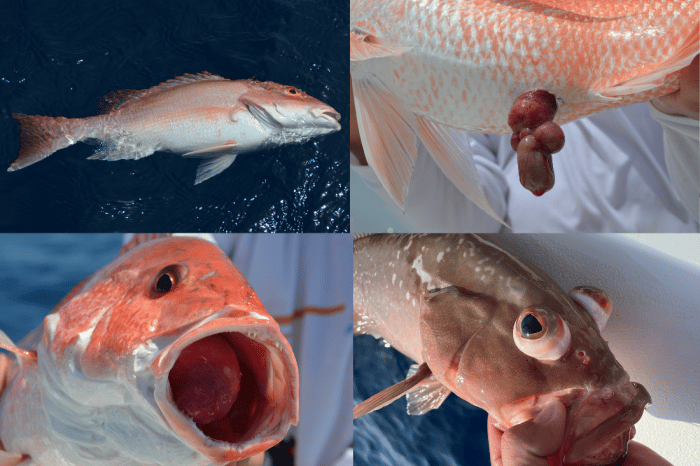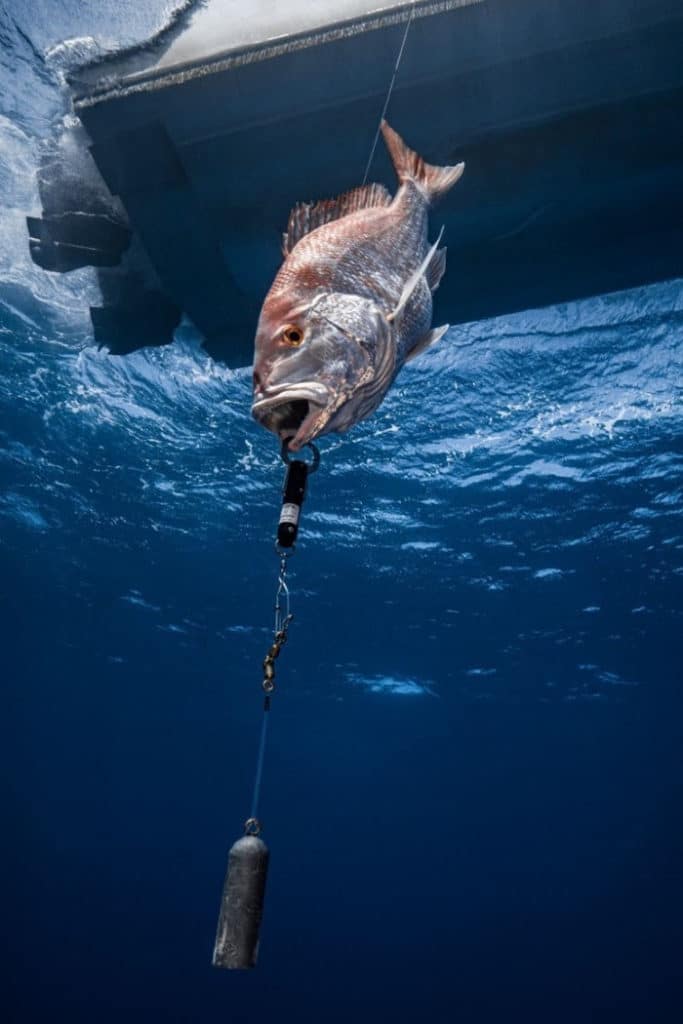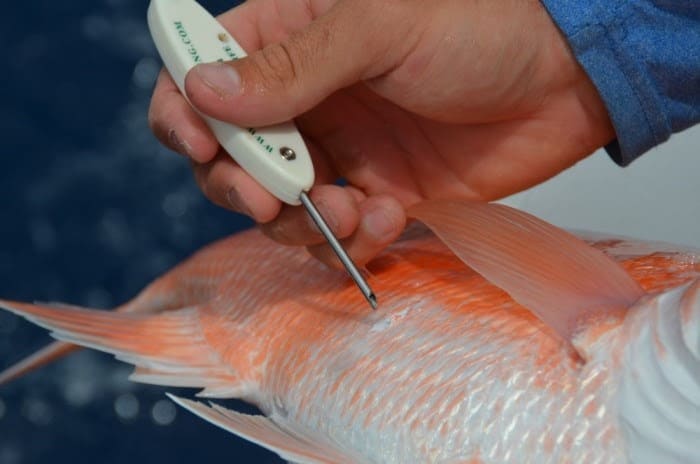Editor’s Note: We originally published this piece in July of 2022. But the Florida Fish and Wildlife Conservation Commission (FWC) approved a rule at its February 22, 2023 meeting aimed at increasing survival of reef fish by minimizing the effects of barotrauma. The new rule, which goes into effect immediately, requires that all vessels targeting reef fish in Florida state waters must have a descending device or venting tool that is rigged and ready for use on board. This goes for those that are looking to take a few fish for dinner or catch and release fishing.
Lots of regulations govern the harvest of bottom fish. Some grouper are too small. Red snapper season may be closed. Amberjack were not the target and need to be set free. You know the drill.
Spend any time bottomfishing beyond the shallows and you’ll soon realize that a fish brought topside from the deep with rod and reel often experiences “the bends.” Or, what fisheries specialists and scientists call barotrauma.
Barotrauma Fish Injuries

The Florida Fish and Wildlife Conservation Commission (FWC) reports that barotrauma injuries occur because of the pressure changes that take place when fish are brought quickly to the surface from depths of 50 feet deep and below. FWC says barotrauma symptoms may show several ways, such as a fish’s stomach coming out of its mouth, a bloated belly, distended intestines or bulging eyes.
FWC authorities say these symptoms can kill fish, unless anglers intervene by using specially developed tools to help bottom fish descend to their preferred depth. And in some cases, they might be required by law.
Some anglers know that not all deep-caught fish brought to the surface experience barotrauma. But many do, and they need help from the anglers who caught them. Here’s what to do.
Tools & Techniques for Safe Release
Experts say that with the right tool and technique anyone can properly descend or “vent” a fish suffering barotrauma, allowing it to reach its deep habitat safely.
“It’s a great opportunity … to return a resource that can continue to breed,” says Liesa Priddy, a former FWC commissioner from South Florida. She appears in a short and excellent educational YouTube video on the subject produced by the commission.
Properly released bottomfish can be caught by other fishermen, says Priddy, and it’s the responsible thing to do by sport anglers.
“It’s not hard to do if you care about the resource, and it’s something everyone should learn how to do and take responsibility for helping with the fishery,” she adds.
Several methods of getting bottomfish back down to their preferred depths work well, according to the FWC, and detailed in their YouTube video above.
Fish Descending Devices

“Descending devices” are one type of tool, consisting of weights that attach to a fish and help take it back to an appropriate depth. There are various types of descending devices but the most common, according to the FWC, are “lip clamps,” “inverted hooks,” and “fish elevators.”
It’s recommended that anglers try different types of descending devices to learn which works best for them and their style of deep-water fishing.
Preparation is vital to successful use of descending devices. If a lip clamp or inverted hook will be used, a heavy-action rod and reel should be specifically designated for it. A stout handline rope also can be used with descending devices, and anglers should plan for one pound of weight for each five pounds of fish sent back deep.
Fish elevators are one of the simplest and most effective descending devices. Milk crates are great for this, but they have limitations because of their relatively small fish holding capacity. Plus, they are bulky inside a boat full of fishermen and other gear. The ease of using a milk crate fish elevator is shown very well in the FWC video.
In use, the open end of the crate is weighted along its edges, and a heavy line is attached to the closed bottom of the crate. In use, the fish to be released is placed inside the crate, it is turned over (open end down), then flipped into the water, dropping it to the depth desired. Once descended, anglers simply haul up the milk crate, and the fish escapes unscathed.
Venting Tools for Fishing

Venting tools also can be used to puncture a fish’s swim bladder, allowing expanding gas to escape so a fish can swim back to the bottom.
Proper venting tools are sharp and pointed instruments. Fillet knives, ice picks, scissors, screwdrivers and hook points should not be used to vent fish, since they can cause more harm than good.
Venting must be done properly, and again video footage is helpful in learning how to do it. A proper venting tool should be inserted two to three inches behind the base of a fish’s pectoral fin. Inserted under a scale at a 45-degree angle, and inserting into a fish just deep enough to release gas from the swim bladder does the job.
“Never insert venting tools into a fish’s belly, back or stomach that may be protruding from the mouth,” advises the FWC.
Be Prepared for Safe Releases
Minimal handling is best for fish survival when releasing bottom fish with descending devices or venting. So, gear needed should be kept handy during a day of angling.
Various descending devices and venting tools are readily available at coastal tackle shops and through website stores. Many are inexpensive, and some tools even are offered free through some conservation groups.
Plenty of educational help is offered to anglers wanting to learn how to best release caught bottom fish, with “Return Em Right” a great place to start a web search on this important conservation topic for anglers.









